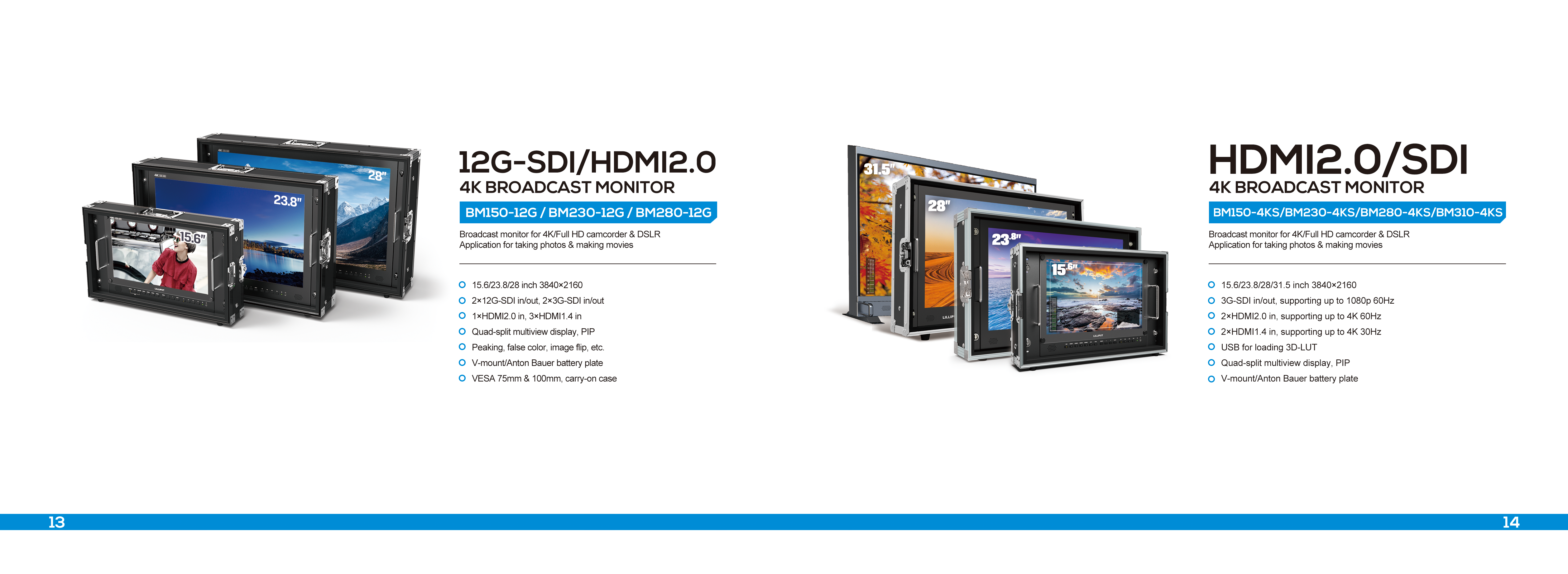A broadcast monitor, often known as a director monitor, which is a professional display designed for broadcast video evaluation throughout production and on-site command workflows. Unlike consumer monitors or displays, broadcast monitor maintains a strict standard for color precision, signal processing integrity, and broadcast functions, etc.
Key Differences from Consumer Displays:
Color Precision
- Color Calibrated to meet broadcast or film standards (Rec. 709, Rec. 2020, or DCI-P3) with ΔE < 1 color error thresholds.
- Maintains 10-bit or 12-bit color depth for smooth gradients.
Signal Processing
- Receives and plays back native video signals without video compression or reduced distortion.
- Supports SDI (12G/6G/3G) interfaces for uncompressed video.
Uniformity & Stability
- <5% luminance deviation across the screen, even in HDR modes (1,000+ nits).
- Some monitors have built-in thermal management ensures consistent performance during outdoor broadcasts.
Monitoring Functions
- Integrated waveform/vectorscope overlays, false color, exposure, aspect ratio markers and so on.
- Validates closed captions and timecode embedding without signal interference.
Why It Matters
While consumer displays prioritize aesthetics (vivid colors, motion smoothing), broadcast monitors are all for truth. Directors rely on them to make final making decisions, detect subtle color composition, and ensure content translates accurately across millions of devices – from cinema screens to smartphones. This “gold standard” role makes them important in professional video workflows.
LILLIPUT
2025.04.28
Post time: Apr-28-2025

